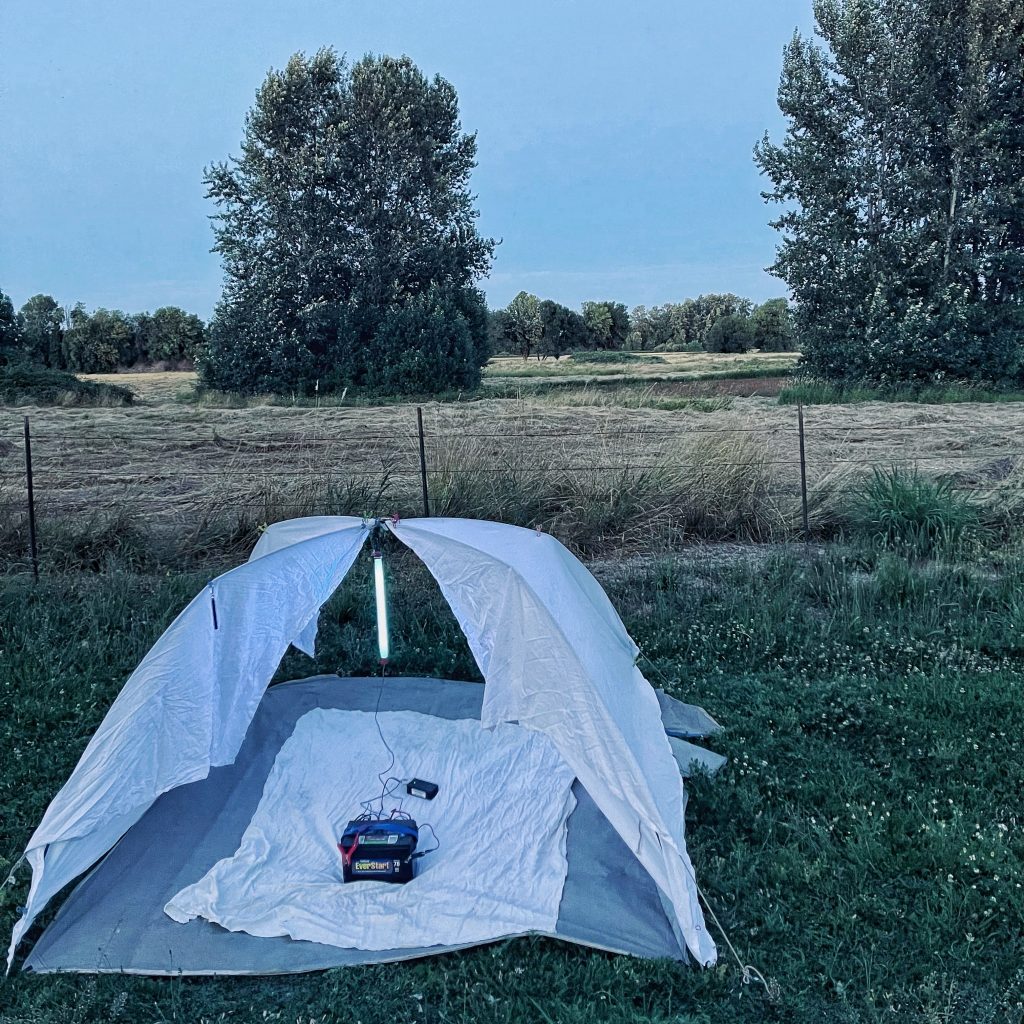
So, in the interest of saving time after the evening’s moth madness is over, and possibly getting myself a bit more sleep, in addition to trying to post these daily logs early in the day so they don’t get lost in the daily grind of folks lives, I am going to try to write them in more or less real time. I just got my sheets and DC light set up, about 5 minutes past sundown, which was at 8:50 tonight. Temperature is 72⁰ (high today was 88⁰), wind is variable but light, and mostly out of the north. Forgot to mention this yesterday, but the moon is waxing and almost to the first quarter (which is actually a half moon). The amount of moonlight does make a difference, and I seldom get big numbers of moths when the moon is up and 3-4 days either side of being full. I assume that it’s competition, and my little lights lose out to that great glowing orb in the sky.
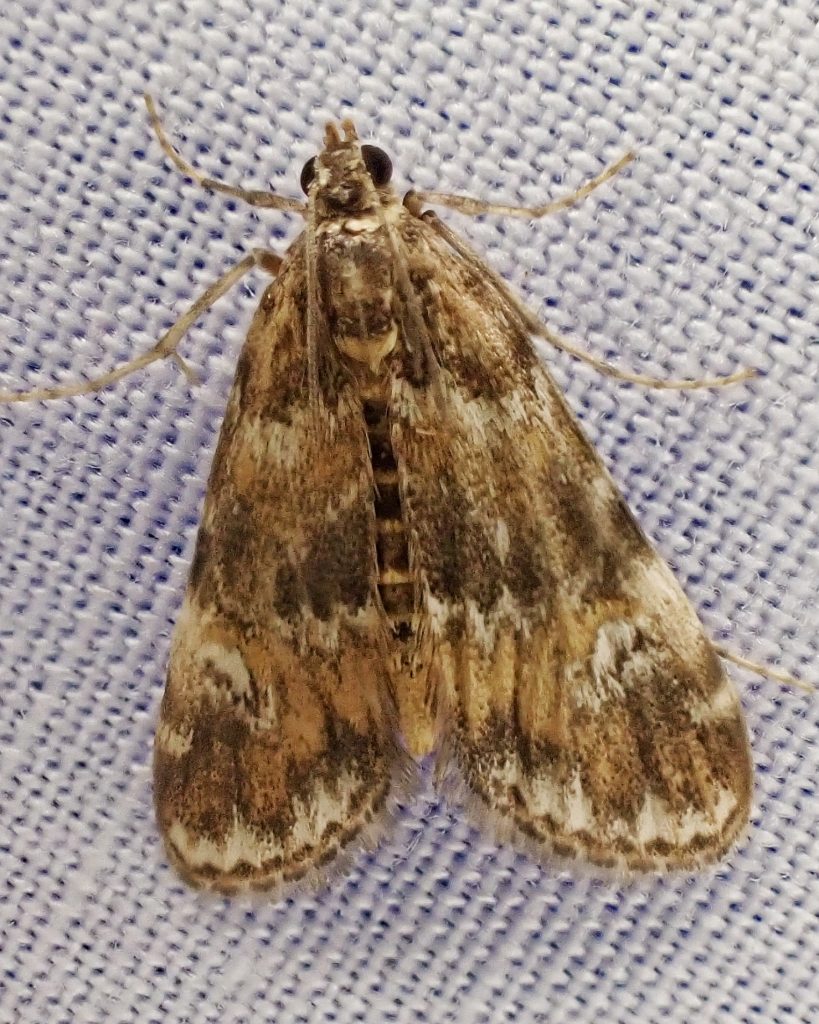
I’m on the Vancouver Lake bottoms tonight. To the west of me is a slough of the Columbia River, and all other directions are agricultural land, mostly hayfields and pasture. That area is dotted with Garry oak, Oregon ash, and cottonwoods. Across the slough is an island that also has alder and maple, as well as numerous shrubs and forbs, but my lights are not visible from the understory because of a dike/road between my setup and the slough. I’ve mothed here about 10 times over the years. In fact my first ever attempt at running light was just down the road a bit. But this is a nicer spot, no lights and a 1/4 acre WDFW parking area. I’ve had some very unproductive nights here, but most of those were weather, temperature, or full moon related. I’ve also had some spectacular sessions, with hundreds of moths and dozens of species. For some reason it’s a slow starting area (at least as regards moths-the caddisflies, midges, and mosquitoes start showing up as soon as I plug in the light), and I seldom get much activity until about an hour after sunset. But conditions are good tonight, and I’ll be surprised if I don’t see at least 25 species.
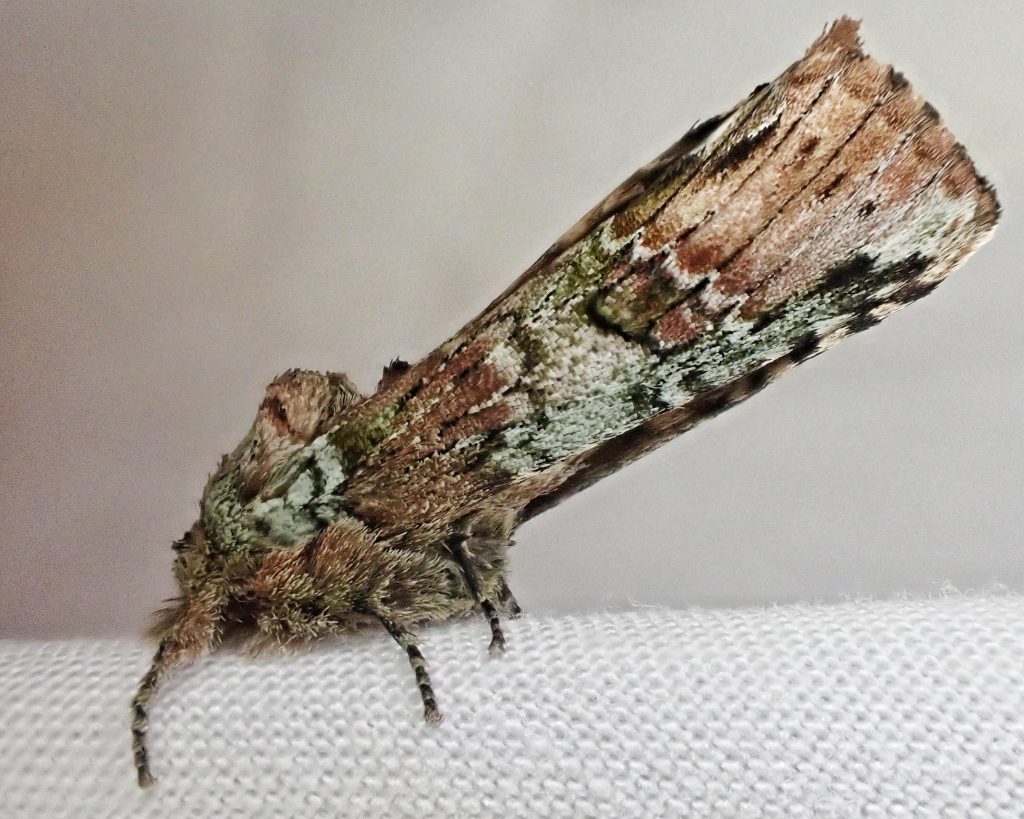
9:41- I should have said macromoths, instead of just moths, because there are quite a few micros already visiting. And there are already so many little dipterids that I think I’m going to try wearing an old Covid mask when I go in to photograph my visitors, because it can be hard to breathe in there sometimes without sucking up a mouth/noseful of those active little protein packets. But, as usual, no moths yet that I have the skills or patience to identify.
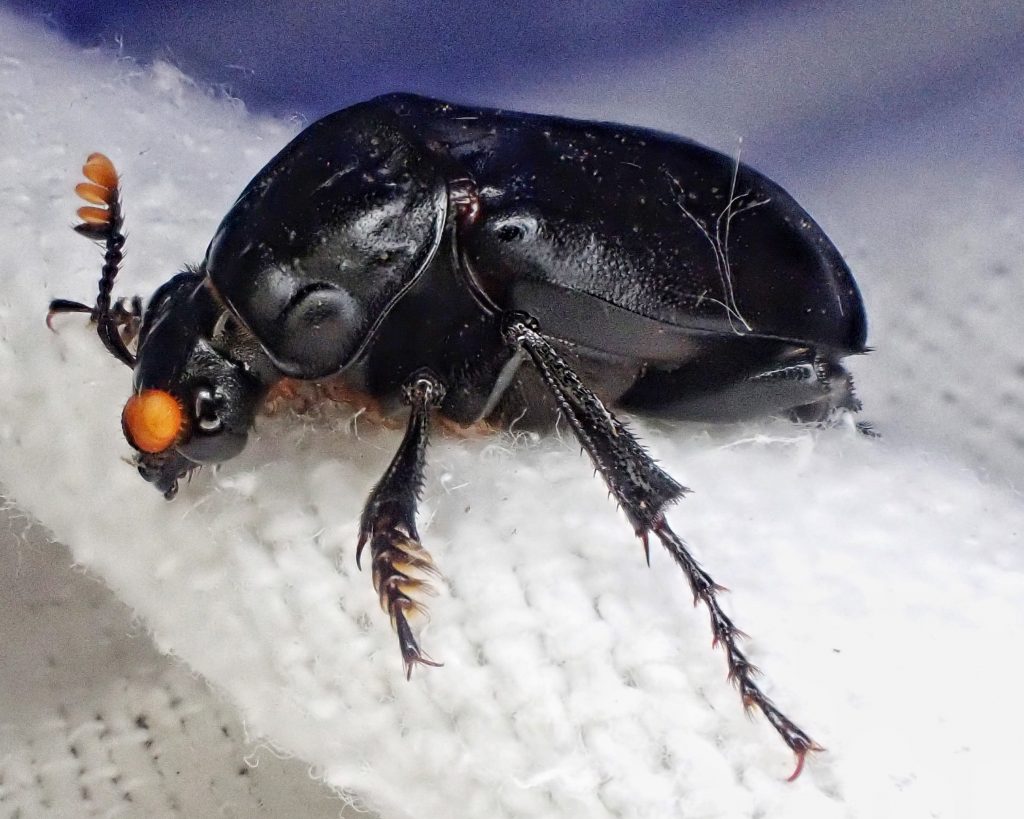
10:14- I finally got my first macromoths of the evening. Temperature has dropped to 65⁰ and the wind has really picked up. Glad I took the time to stake down the setup. I’ve also got three Pacific chorus frogs working the midge buffet, and a Nicrophorus nigrita (Black Burying Beetle) that just seems to be hanging out.
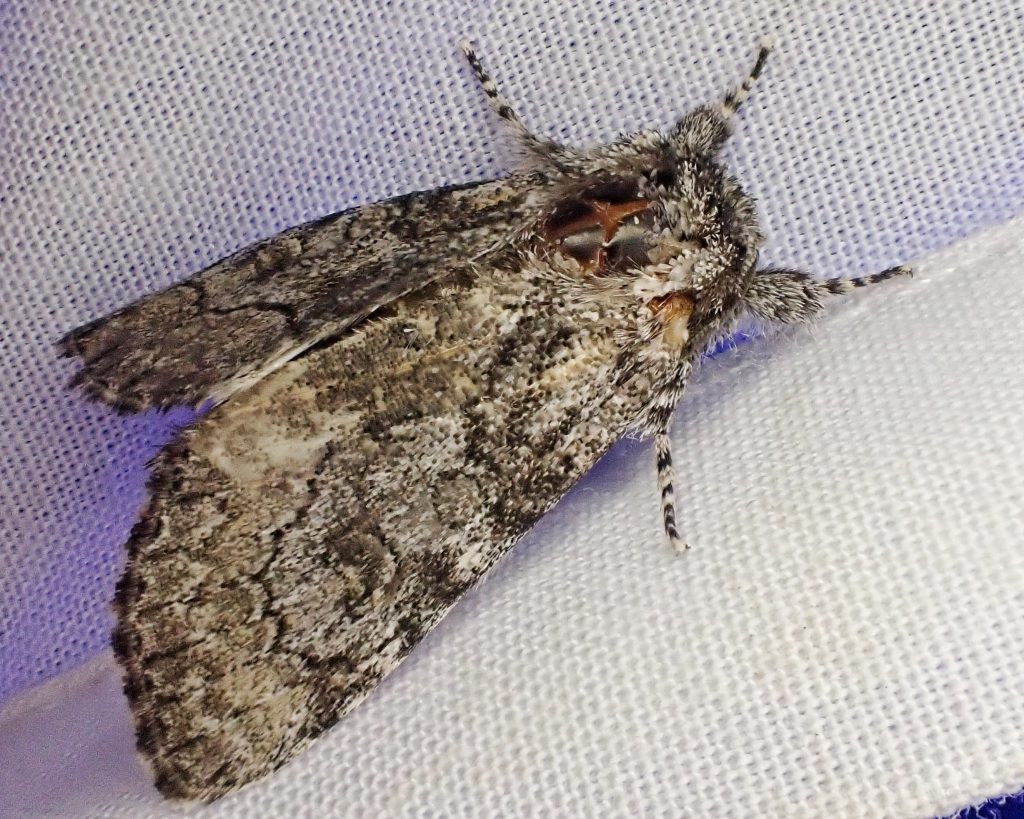
10:58- The chorus frogs are gone, probably spooked or shaken off my sheets by the wind. Wish I’d have thought to photograph them. Pretty slow for moths. Not sure I’ve even had 15 total, and I only count 5 species. The moon has set, and the National Weather Service says the wind should drop down to 5mph after midnight. So I’m far from giving up. In past times of mothing here I’ve usually been serenaded by owls or coyotes or both, but tonight I haven’t heard a thing besides the passing of cars and the wind in the trees. Wearing a mask actually worked pretty well, and wasn’t particularly uncomfortable (it helped a lot knowing I could just pull it off anytime I want to), but the upside of the wind is that it has shaken/blown off most of the tiny dipterids, so the mask isn’t even necessary.
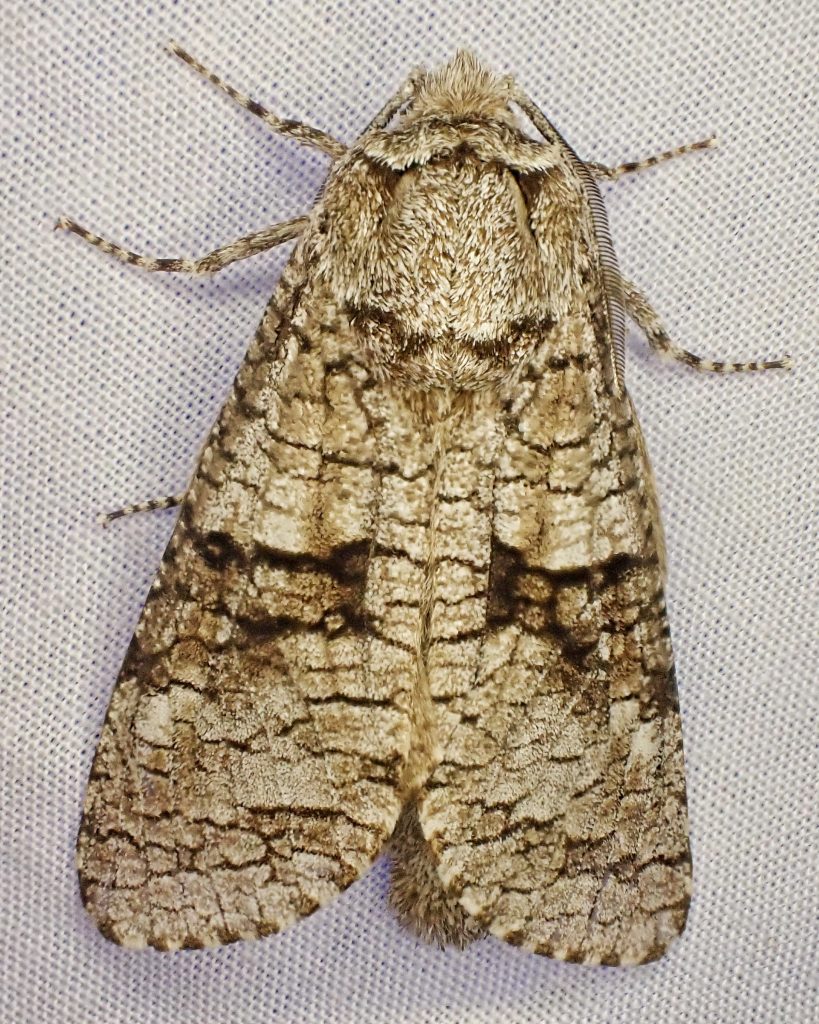
11:45- Well, the wind hasn’t died down in any significant way. Watching the sheets more closely I realized that moths were coming in, but they weren’t settling. So I took to just capturing them when I could, rather than waiting for them to light and remain still so I can photograph them in situ. One of the advantages of mothing close to home is that I have no compunction about simply releasing moths on my porch after they’ve been photographed, since they are already living in this area. Still not seeing big numbers, but I think I’m up to 10-12 species. I’m somewhat disappointed that I haven’t seen any of the big Prionoxystus robiniae (carpenterworm moths), since this is often a hotspot for them, though it might just be too late in the year for them, especially since we had such a warm, dry spring. As usual for this location, I have found a couple of their smaller cousins, Acossus populi (aspen carpenterworm moths), and they are still a very cool, big moth.
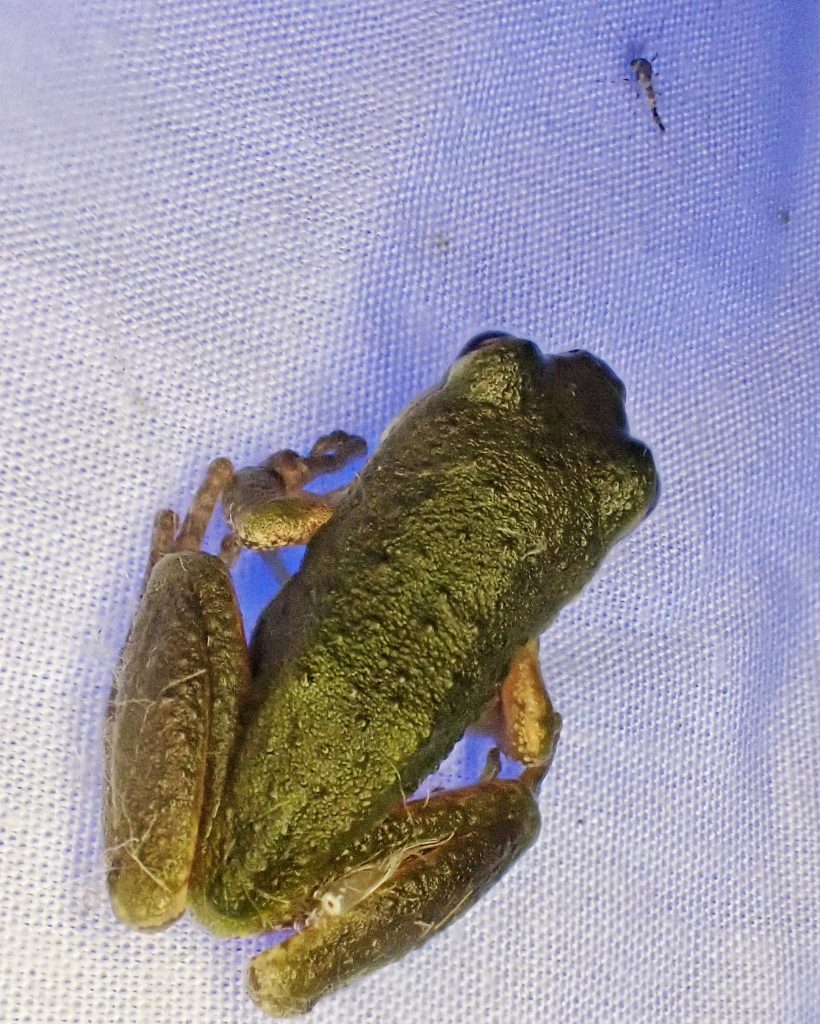
1:37- The wind did finally moderate, but by the time it did the temperature had gotten down to 59⁰. One of the local chorus frogs braved sheet mountain to dine on little midges, and this time I thought to photograph it. After also photographing the moths, who, whether because of the calm or the falling temps had finally settled down, I watched the sheets pretty closely for about ten minutes, and when nothing flew in over that period I started tearing down. I’ve got some work to do to determine the number of species (although several of them I recognize but just can’t remember their dang name), but I’ll be surprised if it’s over fifteen. But that’s all right. I didn’t even have to counsel myself much to avoid being disappointed. It was a lovely night in a beautiful setting and I found moths. What more did I really need?
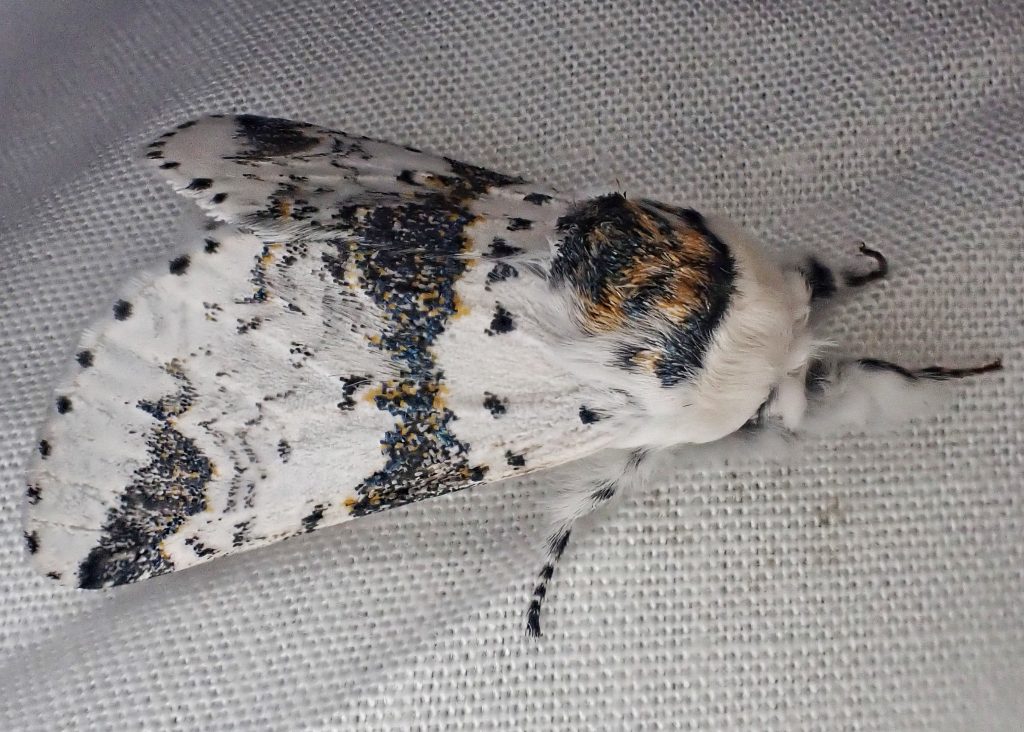
Additional moths I identified from Saturday night-
Drepanidae
Pseudothyatira cymatophoroides (Tufted Thyatrin)
Noctuidae
Lacinipolia subjuncta
Ochropleura implecta
Spodoptera praefica
New moths for this tally identified from Sunday night (the repeat moths were Apamea amputatrix, A. devastator, Chrysoteuchia topiarius, Elophila obliteralis, and Cosmia praeacuta)
Cossidae
Acossus populi (aspen carpenterworm moths)
Erebidae
Orgyia pseudotsugata
Geometridae
Pero mizon
Prochoerodes forficaria
Noctuidae
Diarsia rosaria
Raphia frater (The Brother)
Notodontidae
Coelodasys unicornis (Unicorn Prominent)
Furcula scolopendrina (Zigzag Furcula)
So that is 30 total in the first two nights, plus a few that I’m still trying to figure out.
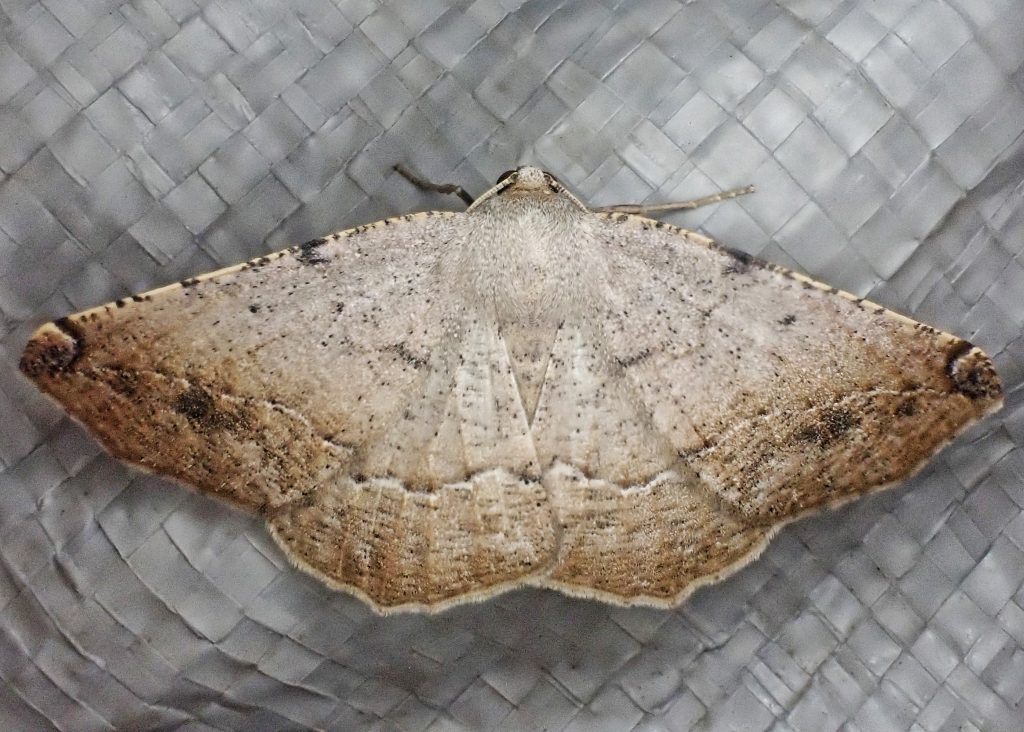
Beautiful– I like the Zigzag Furkula especially!
Cutest moth ever, Janet!
Super fun! The Furcula is a beauty. Love the picture of the chorus frog and his dinner.
Always beats the heck outa watching tv, Sharon!
As for me, I’m smitten by Coelodasys unicornis. What an uplift!
That is certainly an interesting looking moth, Trevor!